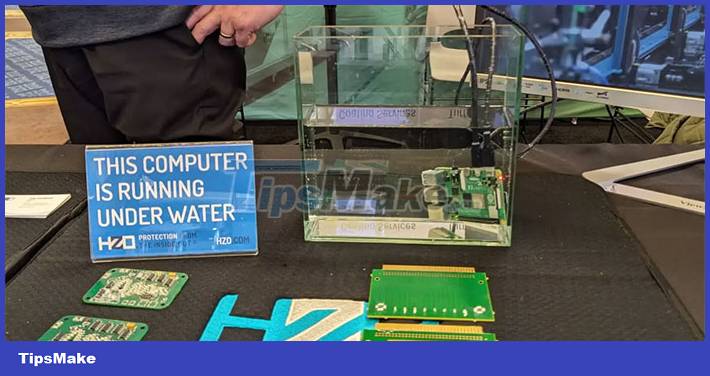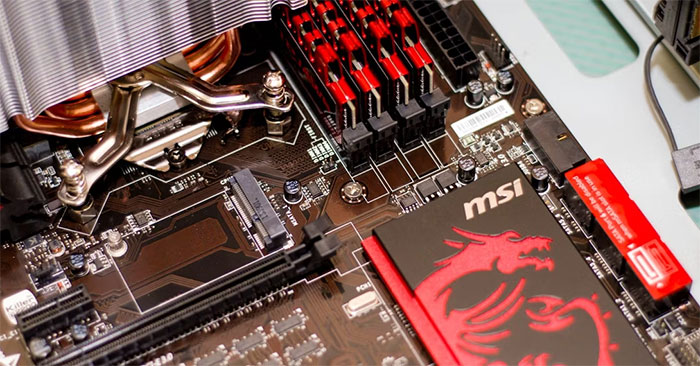New parylene coating technology helps computers work underwater
HZO suggests that hardware companies can turn Raspberry Pi 4 boards into suitable waterproof computer projects.
The Parylene coating process works through chemical vapor deposition (CVD). First, the precursor material is heated until it turns into a gas. The gas is then further heated to form reactive monomers. The temperature in the deposition chamber is maintained 'near room temperature' so that these monomers deposit on all items inside.

When they land next to each other, the monomers connect and form a polymer coating with a typical thickness of 2 to 25 microns. This coating works at room temperature so it can be safely used on delicate electronic components. HZO emphasizes that parylene coatings are highly reliable and non-toxic.
The CVD process can be applied to many devices such as sensors and automotive electronics, smart home devices, consumer electronics, biological sensors, etc.
At CES 2024 HZO showed off a parylene-coated Raspberry Pi 4 operating in a water tank. It is then securely connected to a USB-C power cable and a microHDMI cable for video output, both of which are parylene-coated.

The CVD process can be applied in large quantities. HZO wants to partner with electronics manufacturers and large corporations, including Dell and Nike, to provide parylene coating services.
You should read it
- Apple acknowledges that the MacBook Air's anti-glare coating may be problematic
- Amazon submits the invention of an underwater warehouse to maximize storage space
- How to shoot strange underwater portraits without getting a hair wet
- New technology underwater gliders predict high-precision storms
- 3 underwater shooting guns of Russian task force
- How to Repair Galvanized Coatings
- 15 sculptures are so impressive that you don't believe they exist
- How far is the bullet fired from underwater AK-47 guns?
- Close up of an underwater underwater explosion at an impressive 120,000 frames per second
- Ways to survive underwater in Minecraft 1.19
- Turtle robots help archaeologists study shipwrecks underwater
- For the first time successfully implementing underwater quantum teleportation, China took the lead in the quantum communication race
May be interested

How to enable automatic deletion of Telegram messages

Annoyed because your laptop lost the Windows 10+11 Shutdown button? Refer to how to fix it

Robot dog sets world fastest running record

5 best cheap motherboards for gaming

Alienware launches a wireless mouse and keyboard designed specifically for professional gamers

What are Smishing, Phishing and Vishing? How are they different?






 New technology underwater gliders predict high-precision storms
New technology underwater gliders predict high-precision storms Does iPhone 16 Pro have improved camera lenses?
Does iPhone 16 Pro have improved camera lenses? Test basic understanding of computers
Test basic understanding of computers How to Survive Underwater in Minecraft, Breathe Underwater
How to Survive Underwater in Minecraft, Breathe Underwater Apple acknowledges that the MacBook Air's anti-glare coating may be problematic
Apple acknowledges that the MacBook Air's anti-glare coating may be problematic Amazon submits the invention of an underwater warehouse to maximize storage space
Amazon submits the invention of an underwater warehouse to maximize storage space